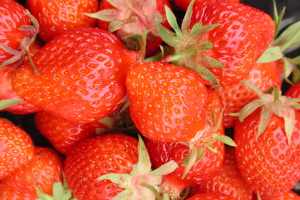 After millions of dollars of research, strawberry growers have come up with an alternative to methyl bromide, which damages the ozone layer: methyl iodide. Unfortunately, methyl iodide has its own set of problems.
After millions of dollars of research, strawberry growers have come up with an alternative to methyl bromide, which damages the ozone layer: methyl iodide. Unfortunately, methyl iodide has its own set of problems.
California’s $2 billion strawberry industry relies to a large extent on a chemical called methyl bromide. It’s a fumigant that growers use to sterilize the soil, before the plants go in. But methyl bromide also damages the ozone layer, which is why it’s being phased out under international treaty.
This is old news to strawberry growers, who have spent a decade looking for a replacement (and successfully pleading for extensions on the phase-out). After millions of dollars of research, they've come up with an alternative: methyl iodide. Unfortunately, methyl iodide has its own set of problems. It can cause cancer, miscarriages and, many scientists believe, neurological damage, both to adults and children, and fetuses. The fear is that people who work in strawberry fields, or who live, work, and go to school nearby, could get sick. That’s the subject of this week’s radio story.
Though organic strawberry growers say that pests can be addressed without the use of fumigants, state ag officials say the industry needs methyl iodide. In a letter obtained by QUEST in a Public Records Act request, California Department of Food and Agriculture said that if methyl iodide is denied to growers, the industry will take a hit. They say it could cost the state as much as 50,000 jobs.
![]() Listen to Strawberries and Worker Safety radio story online.
Listen to Strawberries and Worker Safety radio story online.
